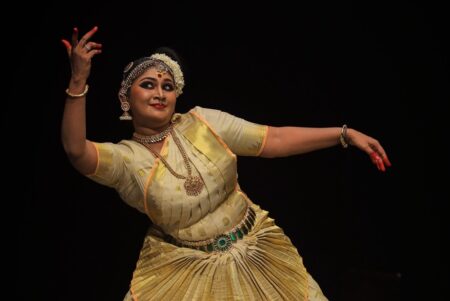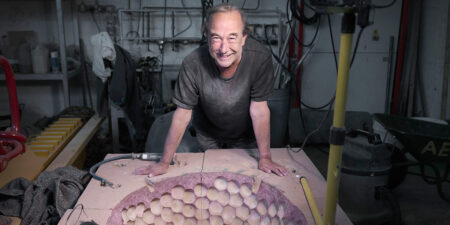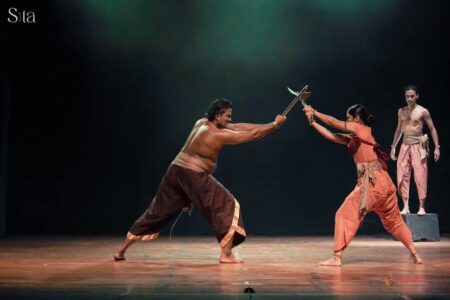‘Sandhya: Sundown at Puri’, a photo series conceptualised by Vrinda Chadha, spotlights the rich art of Odissi dance in the temple’s sculptures.
When I started learning Odissi 19 years ago, under the tutelage of my guru, renowned Odissi exponent Padmashri Ranjana Gauhar, I was mesmerised and struck by her graceful apsara-like look. Over the years, my guru always emphasised on the lyrical and sculpturesque look of Odissi dance, which she explained, found its roots in Bharata Muni’s Natyashastra. This text stated that Odhramagadhi – an eastern performing artform of the yore from which Odissi eventually evolved – has the Kaishiki Vritti (or character). This means that Odissi is a dance full of lasya (characterised by the feminine, delicate element).
My guru would often point out that Odissi is rich in substance and intensity of emotions, a beautiful and rare synthesis of sensuousness and devotion. While accompanying her for dance programs to Odisha, I saw for myself how the sculptures in the temples of Orissa come alive in the movements as the rhythm of dance is captured in thousands of images adorning these temples. Appreciation for this sculpturesque quality that my guru embedded in me from a young age is perhaps what I find to be the most striking feature of Odissi. It is what triggered and inspired me to work on the descriptive photo series titled ‘Sandhya: Sundown at Puri’, to recreate the dancing sculptures of Odissa’s Jagannath temple, Puri.
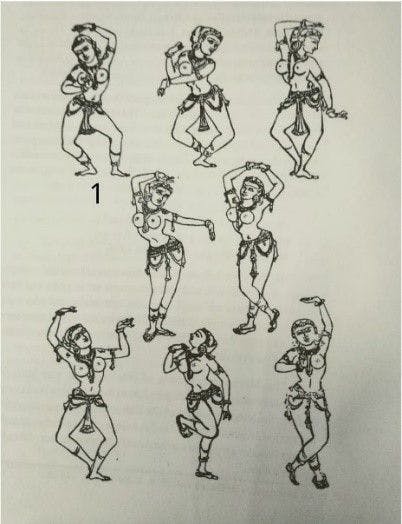
Looking at the reference sketches from the book ‘Odissi Dance’ by dance scholar D N Pattnaik and recollecting memories of sculptures decorating the walls of Jagannath Temple in Puri Odisha, I couldn’t help but wonder if they denoted meaning or were carved simply for aesthetic appeasement.
Either way, their bold and sensuous presence, so close to the deities, is the freedom I associate with dance and art, contrary to the rigid covers of pseudo morality we hide behind today. For me, the photo series invoked a character shade in each picture. Here, I present a picture-wise account of the series, which perceives every dancing sculpture with its own personality that is set in the current complex cultural fabric of the dance world today.
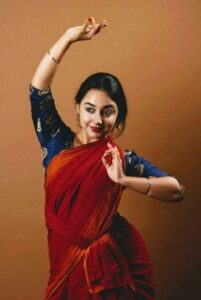
The ‘Observant Novice’
The first dancing pose made me think of the curious and watchful observer in every artist who attempts to decode the hypocrisies of a strange world. To willingly or unwillingly finding their place as they take the first step – engaged yet disengaged. Coping with the very fundamental angst of existence and all the overwhelming emotions it brings along. These then translate into their art and showcased for the rest of the world to see.
Trivia:
The torso is in Dakshyachala position
The left hand in Shukanchanchu and right in Hamsasya Mudra
The feet are in a wide Tribhangi position
Eyes in Sachi Drishti Bheda and neck in Tirascina Griva Bheda
Oddly this pose does not raise that hand over the head that is to the side of the hip bend. In fact, it uses the opposite, creating an unusual body position.
The ‘prepossessing and unfeigned’
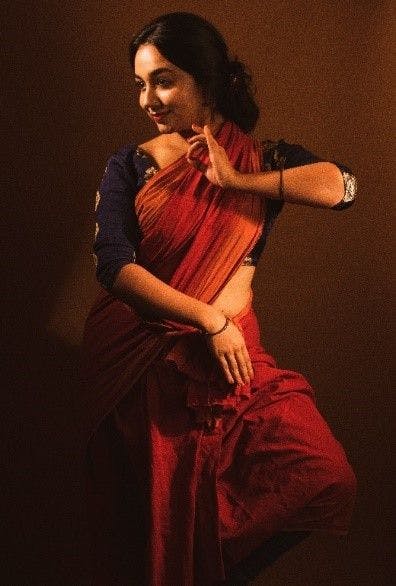
Dancing sculptures of Puri’s Jagannath Temple often exude an honest and sincere prepossessing beauty. Their untouched innocence and piercing naivety seem to me a reflection of the artist who created them. Often dance challenges one to navigate and shed through the inner walls built over our true selves. Usually, one is unaware of their presence and in order to come closer to the ‘self’, dance demands that we shed such layers thus leaving no room for dishonesty. Perhaps art requires us to recognise authenticity within and consequently adapt it in our worldview.
The artist’s work seems most appealing when this unfeigned, earnest, childlike genuineness takes over while performing on stage or otherwise. No amount of external glamour or glitz compares to this quality of vulnerability induced by art. A quality independent of and beyond body shapes, skin tones, genders, social, economic backgrounds. To think that art allows such an inclusive space & freedom, to anyone willing to put in heart and effort, is truly a liberating thought.
Trivia:
The right hand is in Dolahasta and the left is in Shukanchanchu Mudras.
The foot position is of Nupur Paadabheda (left toe touching the right ankle while the body is bent in tribhang)
Interestingly the neck is tilted away from the hand near the chin, giving the dancer a coy look as she sees in the opposite direction.
The ‘contemplative’
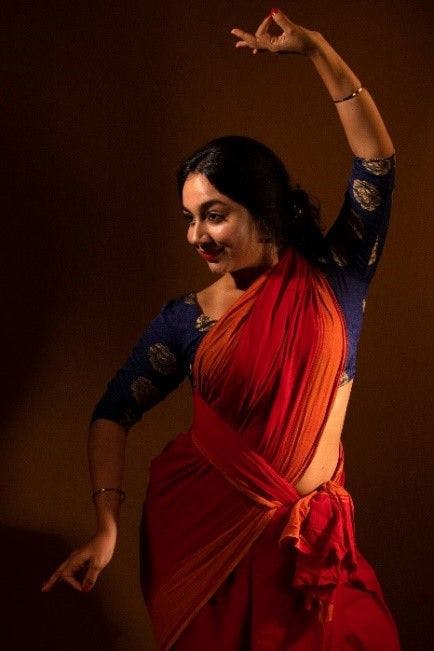
The artist’s job is to present their work in such a way that it impacts the audience without making the effort put into the process evident. A touching painting, a haunting song, a powerful dance, etc, comes with years of practice. This built-up, leading to the final presentation, is inconspicuous. It is transformed subtly and gracefully by the artist. The practitioner of an artform is privy to the multiple levels that need crossing in order to reach a polished finality. Which when looked at closely is merely a start, a drop in the ocean. The process of growth is ever-evolving and never-ending.
Dancers often contemplate between the classic struggle of head and heart – the head constantly focussing on perfecting those tiny technical details while the heart urges to give in and let go. An agreement is arrived when the body has thoroughly imbibed in its muscles every movement, thus leaving automatic room for the heart to leap, fly and indulge in the magical joy of a piece progressing from the piece learnt mechanically once to the piece truly becoming the dancer’s own identity for a fleeting moment because it comes from someplace within.
Trivia:
Both hands are in Hamsasya Mudra
Feet in Kunchita Paada (left heel raised)
Torso in Bamachala position (rib cage shifted to the left side)
Head in Dhuta Shiro Bheda
The ‘playful and blithesome’
Sometimes we find ourselves going through a 360-degree mood shift before and after dancing. As if getting on a train at a grim cold place and journeying suddenly to the sunny tropics. While the feeling of heaviness may remain, one becomes indifferent to its weight upon losing the self in movement. It is then channelled effectively through emotions (storyline-based pieces) or in energy (power-packed technical pieces) or both.

Usually, the end of practice leaves one feeling spirited and reloaded. A feeling of being able to take on anything, contrary to the drained feeling one associates with an intense workout. The rush of dance is unmatched and creates a hunger for more. Satiated only once the dance begins again next time. An infinite cycle.
Trivia:
Right hand in Dolahasta and left in Hamsasya Mudra
Left heel is raised and body is in Abhanga position
Eyes in Sachi Drishti Bheda and Neck in Tirascina Griva Bheda
Torso in Bamachala position (ribcage shifted to left)
‘The dreamy damsel‘
The recurring depiction of a woman in storylines is of dreaming and romanticizing over the man she loves. A forlorn lover always waiting for a union with him. While that mood may be a classic one and enjoyable now and then, I can’t help but wonder what the modern woman would dream of? Maybe making the first move? Or having an unconventional gender preference? Or an unromantic dream altogether?
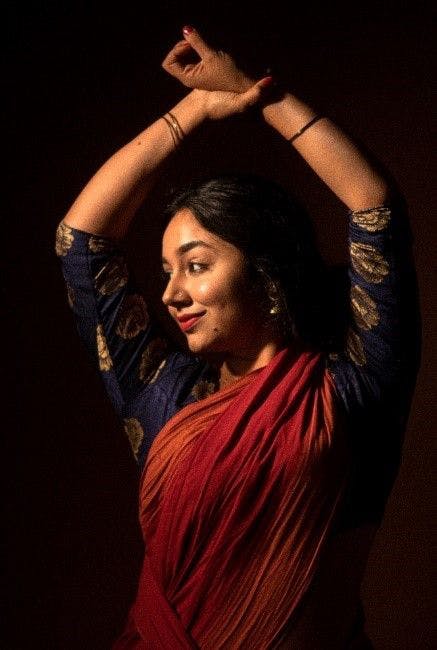
An ambitious one instead, a dream of a better world, a more equal world. And so, this ‘Dreamy Damsel’ contemplates that while it may be true that male artists have it hard due to the pressures of gender stereotypes in the dance field, one can’t at the same time dismiss the struggles of women in this field either. The fabric of orthodox patriarchy is what she’s unfortunately been compelled to weave herself in. Times have changed though. She dreams to tear right through this stifling fabric. She dreams for her skill & art to be noticed over her exterior & demeanour. A dream of emancipation, so limitless it consumes her & empowers her to believe she can do anything, that she can take on the whole world. And so, she dreams of a world so equal even for him as it could be for her. A new romance perhaps!
Trivia:
The feet are in Dhanupada (right foot heel raised, crossed in front of left)
Torso Dakshyachala position (Rib cage shifted to the right)
Both arms are raised above the head.
The seeker
Words written, spoken or thought are often the bricks of conceptual buildings, tools used on our quest for knowledge. However verbal language is limiting at times, and so the body emerges as the ideal vehicle for truth. It is honest and fills in the indescribable, while our speech defines the concreteness of an idea. In some ways, it seems that the two together complete each other. Be it words or dance, we seek to feel and convey a deeper meaning through them. The expectation of what one will discover in a dance piece is different almost every time it is practised. Just as it happens when re-reading a text. A new meaning, perspective or interpretation of the same piece each time it is done, arouses a feeling of subjectivity.
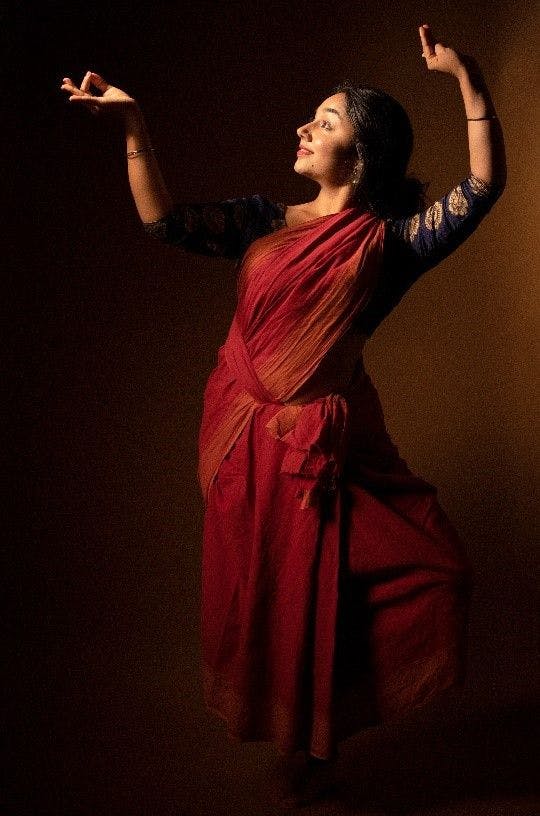
We see words often being employed without thought today, carelessly thrown around. The question is – would we be so neglectful of art? Pursue it without reflection? Aren’t we going to seek more from it? Explore its possibilities and resist its stagnation? The fear of quieting ideas, speech and the fear of invisible boundaries finding their way around art and all knowledge, has been braved against all through history. For the very essence of art is to be a seeker of truth & knowledge, to be real and free just as words should be.
Trivia:
Right hand in Hamsasya & left in Chatura hasta mudra
Head in Utkhipta Shirobheda
Torso Dakshyachala position
Feet in Suchi Padabheda
The one with the pride
Often our sense of self blurs, captures and occupies the room needed to be left for reflection, reason and the ability to accommodate counter-narratives to ours. The fine line between self-worth and haughtiness is faint. If dangerously crossed it starts to resemble a suffocating solid block of black with no room for creativity or bloom. Only darkness and muck bouncing off the walls it is trapped in. The undoing of an artist is in his/her arrogance of dismissing any other creative voice other than his/her own. The muck then trickling down to their body of work and, as a consequence, averting audiences because in art there’s no room for deception.
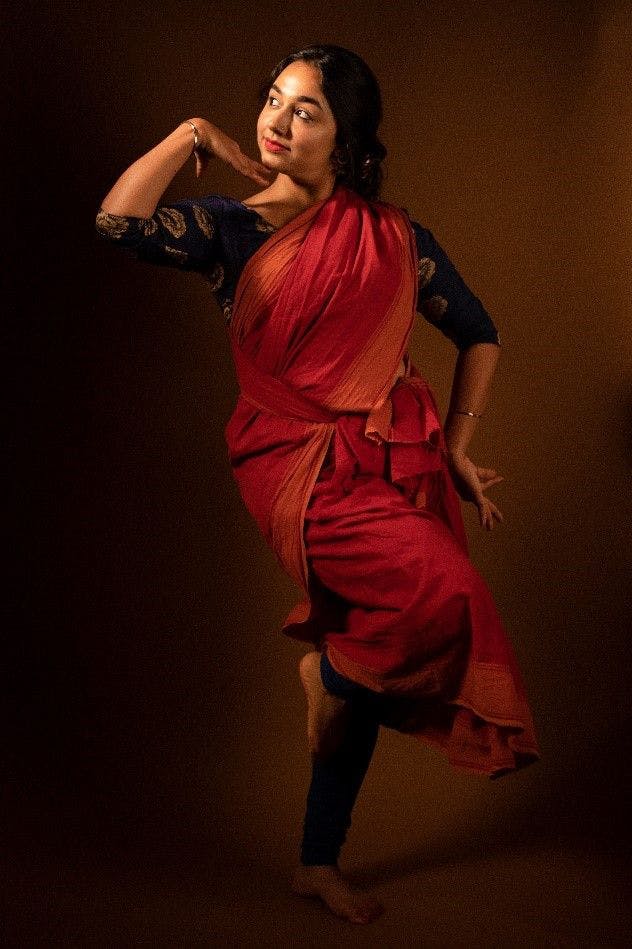
One could extend the same thought to a society’s ruination if it becomes aggressively arrogant and unable to accept counter-narratives or criticisms. Halting all creative processes of growth. Breeding more filth in its toxic gloom.
In the infinite vastness of universes and existences, what will we account ourselves for? Divided and consumed in the self, ego and its dictates or united in coexistence, multiple voices, views, open-mindedness and love?
Trivia:
Feet in Bandhani Paada (right foot curled behind left knee)
Utkhipta head position (face moves diagonally up)
Torso in Dakshyachala position (ribcage shifted to right).
‘The Resolute’
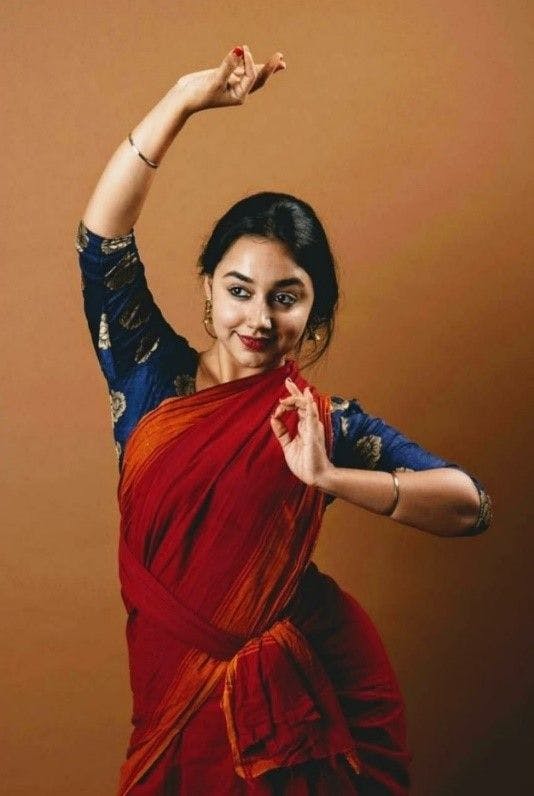
There’s never one way to do something.
There’s always room to counter inaction.
There’s always a why not? To a why. A ‘Yes I can’ to a ‘No’.
There’s always a beautiful dream. Always thorns on arduous paths towards realising it.
There’s always a fight to carry on. Always an easy way out.
There’s always morals, conscience, hope & action. Always turning a blind eye.
There’s NEVER one way to do something.
Unwavering, let’s start somewhere?
Trivia:
The torso in Dakshyachala position
The left hand in Shukanchanchu and right in Hamsasya Mudra
The feet in Dhanu Paada (heel raised and crossed in front of the other flat foot). This last pose is similar to the first pose except the feet positioning is different.
“Creating! that is the great salvation and freedom from suffering, and life’s alleviation,” the late German philosopher and cultural critic Friedrich Nietzsche is believed to have said.
This sums up the quest of all artists, be it in the times when these sculptures were actually built or in the present where we try to emulate them while building a dance vocabulary. The need to create is what brings excitement, hope and freedom. It is the basis of why we do what we do. To bring an idea, concept, thought, artwork into existence is truly magical.
Photos and design by Innee Singh
Write to us at [email protected]


